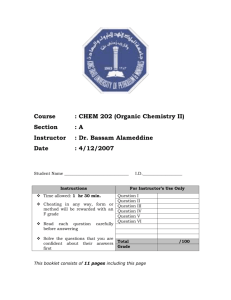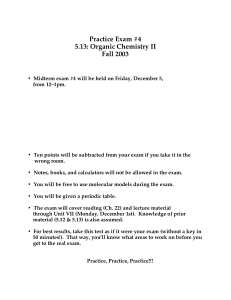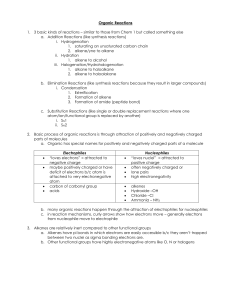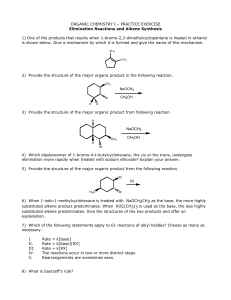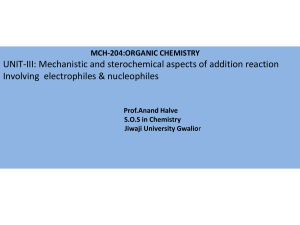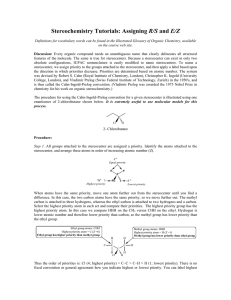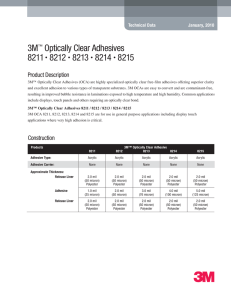Document 13496408
advertisement
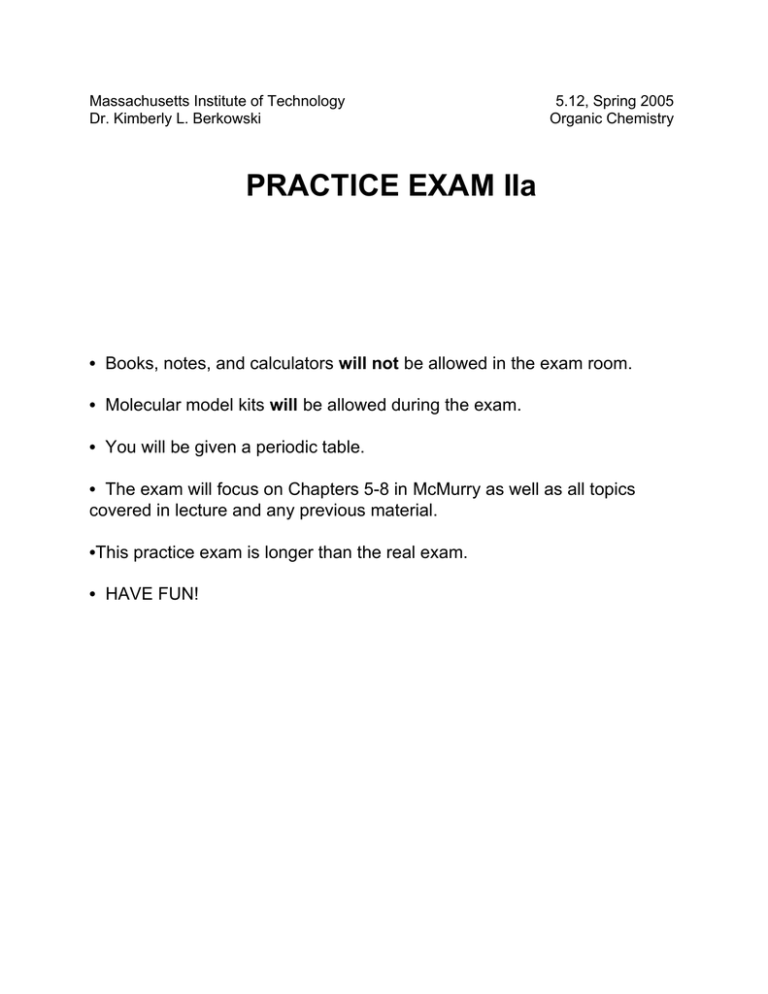
Massachusetts Institute of Technology Dr. Kimberly L. Berkowski 5.12, Spring 2005 Organic Chemistry PRACTICE EXAM IIa • Books, notes, and calculators will not be allowed in the exam room. • Molecular model kits will be allowed during the exam. • You will be given a periodic table. • The exam will focus on Chapters 5-8 in McMurry as well as all topics covered in lecture and any previous material. •This practice exam is longer than the real exam. • HAVE FUN! 1. The degree of unsaturation for the molecule C8H11NOCl2 is: a) 1 b) 2 c) 3 d) 4 e) 5 2. Assign E/Z nomenclature to the following alkenes. OH OMe Br O OH 3. Circle the alkene that has the lowest energy. 1 4. Rank the following carbocations according to stability (1 = most stable, 5 = least stable. OCH3 5 Name the following molecules. CH3 Br H3C CH3 2 b) Energy Energy a) Reaction Progress Reaction Progress b) Energy Energy c) Reaction Progress Reaction Progress 6. Draw hypothetical reaction coordinate diagrams for: (a) An endergonic, two-step reaction with the first step being the rate-determining step. (b) A reaction with three transition states and DG > 0. (c) A three-step reaction where K > 1, and the third step is faster than the first step, which is faster than the second step. (d) A one-step reaction where the conversion to reactants is faster than conversion to products. Is DG positive or negative? 3 7. Provide products for each reaction (include all stereoisomers). Indicate if the products are achiral/optically inactive (A), racemic/optically inactive (R), meso/optically inactive (M), or chiral/optically active (C). 1. BH3, THF 2. H2O2, NaOH CH3 1. CHCl3, KOH O 1. H3C O OH 2. H3O+, H2 O 1. Hg(OAc)2, H2O 2. NaBH4 (H3 C)3C Et 4 1. O3 2. H2O2 1. OsO4 2. NaHSO3, H2O 8. Provide alkene or alkyne reactants and reagents for the following reactions. The number of carbon atoms in the reactant should equal the number of carbon atoms in the product. H O O CH3CH2 5 CH3 9. Write out the mechanisms and products for the following reactions. Use clear, carefully drawn structures and precise curved arrow notation for all steps. Provide distinct structures for all intermediates. Show all lone pairs. Br2 H2N HBr 6 10. Provide a detailed mechanism for the following transformation. Write in all the reagents used above the arrow. Ignore stereochemistry. Br 7


